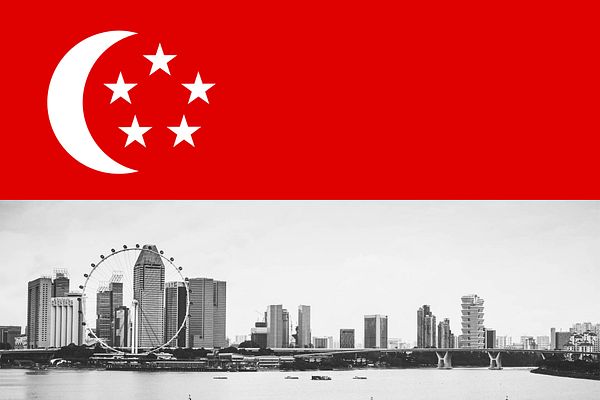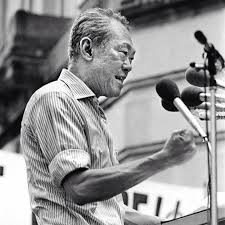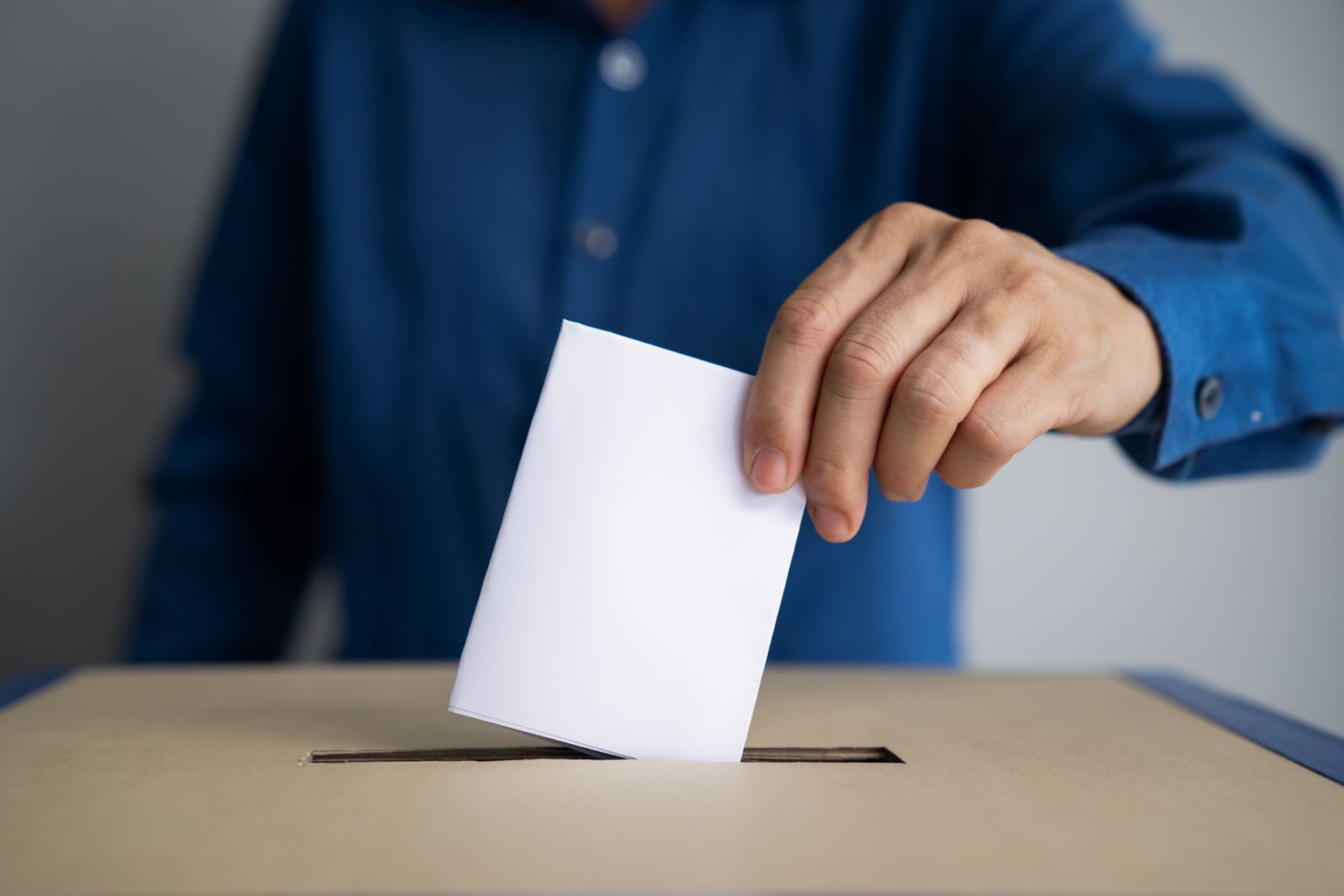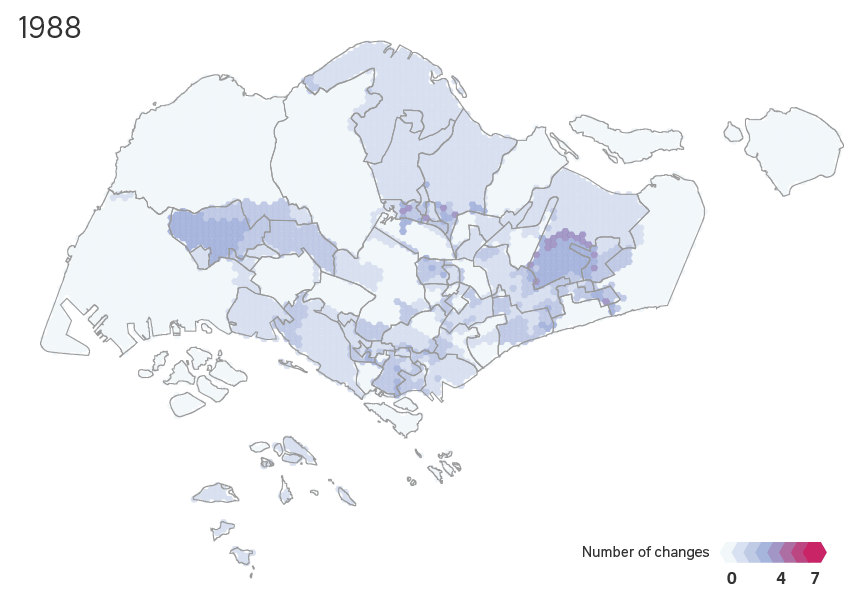Decoding Singapore's Political Diversity
Singapore, a tiny island nation in Southeast Asia, has defied the odds to emerge as a global economic powerhouse. Central to its remarkable transformation is the steadfast leadership of the PAP, led by the iconic figure of Lee Kuan Yew. Since gaining independence in 1965, the PAP has maintained an unbroken grip on power, shaping policies and governance with a vision of stability, progress, and prosperity.
But what lies beneath this political dominance? What factors have contributed to the PAP's enduring success at the polls? Through interactive data visualizations and insightful analysis, we delve into the complexities of Singaporean politics, questioning, and probing the reasons behind the PAP's resilience.



"Many forms of Government have been tried, and will be tried in this world of sin and woe. No
one pretends that democracy is perfect or all-wise. Indeed, it has been said that democracy is
the worst form of Government except for all those other forms that have been tried from time
to time.”
Winston Churchill
_______________________________________________
Prologue
Despite being a Westminster-styled democracy with free and fair elections, there exits a paradoxical phenomenon of long-term rule by a single political party in Singapore.
The dominance of the People's Action Party (PAP) in Singapore's political landscape contradicts expectations based on conventional democratic principles.
Understanding the dynamics of political dominance in Singapore is crucial for assessing the country's democratic health and governance effectiveness. It raises questions about the balance between political stability and diversity, as well as the implications for citizen participation and representation.

Humble Beginnings
1954 - 1959
The PAP's first election performance was modest, winning only 3 out of 25 seats in the first election.
The ruling Labour Front lacked autonomy as the British limited self-governance under the Rendel Constitution.

Early Challenges
1959 - 1963
The PAP faced by-election losses and defections and an untimely death of a minister, losing its majority by 1962.
A planned referendum on merging with Malaysia allowed for delaying elections. The PAP campaigned for a merger with Malaysia, which passed in a national referendum.
Merger with Malaysia and Operation Coldstore leading to the arrest of many
opponents from the main opposition party,Barisan Sosialis, on suspicions of communism and
subversive plotting, weakened opposition.
Despite only securing 47% of the vote,PAP still managed to form the government

Rise to Power
Part 1 / Beginnings
1954 – 1968

First 'Landslide' Victory
1959
Disappointment with Labour Front led to their splintering and other opposition parties were seen as passive and ineffective.
PAP won a majority of seats (83%) but only 54% of the popular vote. This was due to a multi-party race (11 parties) and the first-past-the-post electoral system.

Consolidation of Power
1965 - 1984
On 9 August 1965, Singapore was expelled from the union with Malaysia and became an independent state.
Barisan Sosialis and other opposition parties boycotted the elections on the grounds that Singapore's independence was "phoney".
PAP was returned to power on nomination day and the first time it won all seats, which ended up being a recurring theme until 1984.
This marked the true beginning of the PAP's dominance in Singaporean politics.
_______________________________________________
Reflections
It's worth acknowledging
that the PAP did legitimately contest and win
across multiple free elections, reflecting both the
will of the Singaporean people and what the
political market could then supply.
While the PAP took this period to oversee
significant socio-economic developments in
Singapore, their later actions evidence an
increasing confidence and reliance on their
political dominance, hinting at a sense of
entitlement to power, with the party beginning to
attribute Singapore's economic success solely to
their continued political dominance.

First Loss
1981 - 1984
JB Jeyaratnam's by-election win in 1981 marked the first non-PAP MP in over a decade.
But the introduction of NCMPs in 1984 suggests that PAP considered the need for an official opposition as a “myth”
PAP would introduce a series of new policies in the next few years that sought to retain their power center and which
the opposition suggest aimed to give the PAP an unfair advantage.

Continuing Dominance
1996 - 2011
The PAP is criticised by the opposition for continuing to use the political system to its advantage.
The current system for drawing electoral boundaries provides broad discretion for the Prime Minister with limited transpaerncy and it gives the ruling party an unfair advantage to potentially manipulate boundaries to their advantage.
It is argued that the PAP continues practices like gerrymandering and influencing the eligibility of presidential candidates and continue to limit true political competition.
The PAP's continued dominance suggests a long road ahead for the opposition.
Part 2 / Changes
1981 – 2011

Policy Changes
1988 - 1996
Policies like Town Councils and GRCs were introduced to favor the PAP and make it harder for opposition parties to win.
The Town Councils Act aimed to link strong municipal management with voting for the PAP.
The GRC scheme was initially justified on practical grounds but later defended for its supposed benefit to racial representation.
The Elected Presidency Scheme was introduced to safeguard against an opposition win and potential "misuse" of reserves.
The NMP scheme, while promoting diversity, is seen as a way to control opposing views.

Opposition Progress
2011 - Present
The Workers' Party (WP) wins Aljunied GRC, creating a Watershed Moment, marking the first time a GRC is lost by the PAP.
But this came at a cost of the Singapore People's Party (SPP) losing all seats contested in 2011 and hasn't won any since.
The opposition has made slow progress with only WP winning only a few additional seats over a decade, and whether 2011 is a true turning point for Singaporean politics remains to be seen.
_______________________________________________
Way Forward
The PAP has used past situations to its advantage, creating a situation of political autocracy
and has resisted efforts to increase diversity in parliament and political participation.
But changing social attitudes and a volatile, uncertain, complex and ambiguous world unlike the Asian Tiger economic context and priorities of the 70s,
will challenge PAP's current approach. The PAP may need to adapt to avoid stifling political discourse and ensure representation reflects voter support in the parliament, and in Singapore.